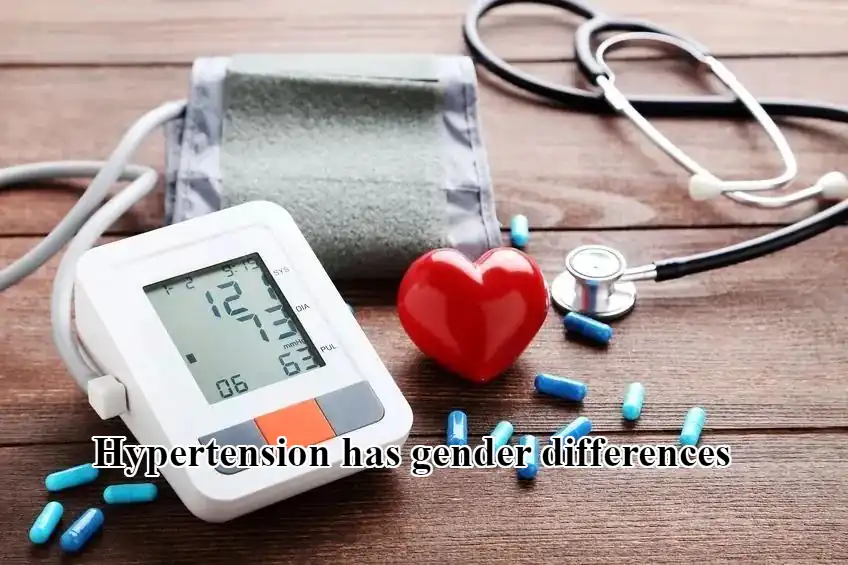Hypertension is currently recognized as the most important risk factor for cardiovascular and cerebrovascular diseases. Similarly, for women, hypertension is also a significant risk factor for cardiovascular and cerebrovascular diseases. Cardiovascular disease is the leading cause of death for women in developed countries and most developing countries. Due to the unique physiological characteristics of women, female hypertension patients exhibit several specific features. Influenced by menstruation, fertility, menopause, and other factors, hypertension in women is more complex than in men. To pay attention to the disease progression of female hypertension patients, it is necessary to further understand the characteristics of female hypertension and corresponding treatment strategies.
Epidemiology
Gender differences in blood pressure begin to appear in adolescence, with systolic blood pressure being higher in males than in females. According to the blood pressure measurement standards calculated based on the survey data of over 110,000 children and adolescents in China in 2010, hypertension in 12-year-old children is defined as >124/78mmHg for males and >122/78mmHg for females. The blood pressure gap between genders gradually increases; hypertension in adolescents is defined as >132/80mmHg for males and >124/78mmHg for females. Pulse pressure in women with hypertension is greater than in men.
Gender differences in hypertension are also reflected in prevalence rates. The 2013 American Heart Disease and Stroke Statistics data showed that the prevalence of hypertension in premenopausal women is lower than in men of the same age, but this advantage disappears after menopause. After menopause, the prevalence of hypertension in women gradually increases with age, and the rate of blood pressure increase exceeds that of men, while the control rate gradually decreases. Studies have reported that the prevalence rate in men is higher than in women before the age of 54, the prevalence rates are comparable between men and women aged 55-64, and the prevalence and incidence rates in women over 65 are higher than in men, and the gap becomes more significant with increasing age.
Specifically in China, a hypertension sampling survey conducted by the Chronic Non-communicable Disease Prevention and Control Center of the Chinese Center for Disease Control and Prevention in 2010 showed that the estimated number of adult hypertension patients reached 330 million, and the prevalence rate in adult women was 31.8%, decreasing sequentially from east to central to west regions, with no significant difference between urban and rural areas. The prevalence of hypertension in women aged <55 years in China is lower than in men, but the prevalence rate in those aged ≥55 years is higher than in men. The proportion of grade 1 and grade 2 hypertension patients among female patients is lower than that among men, but the proportions of ideal blood pressure and grade 3 hypertension are higher. The treatment rate (27.7%) and control rate (6.5%, even lower at 3.8% for those aged 18-44 years) of hypertension in women in China are significantly lower than in developed countries.
Risk Factors and Complications
Compared with men of the same age, the growth rate of obesity and overweight incidence is faster in postmenopausal women and occurs more frequently in female hypertension patients. The mechanism of this is still controversial. Overactive sympathetic nervous system, insulin resistance, leptin resistance, overactivation of the renin-angiotensin system (RAS), and impaired natriuretic peptide activity are related to this.
Gender dependence also exists in left ventricular systolic and diastolic function. When chronic pressure load increases, gender may affect the heart’s tolerance. Left ventricular hypertrophy in female hypertension patients is more strongly associated with high ejection fraction.
Pregnancy, unique to women, also affects their hypertension and cardiovascular risk. Meta-analyses have shown that preeclampsia increases the risk of hypertensive disorders by 4 times and doubles the risk of cardiovascular disease.
Studies have shown that the prevalence of hypertension in female heart failure (HF) patients is greater than in males (72% vs. 61%), suggesting gender differences in the etiology of heart failure, and hypertension is the most important risk factor for heart failure in women. Furthermore, there are also gender differences in the characteristics of heart failure. Studies have shown that although the overall prevalence of heart failure is not different between men and women, the incidence of left ventricular systolic dysfunction in men is 2.5 times that of women (5.5% vs. 2.2%). However, heart failure with preserved ejection fraction (diastolic heart failure) is more common in women. The Framingham Heart Study showed that the 5-year survival rate after heart failure in female hypertension patients is higher than in men (31% vs. 24%).
Treatment Drug Selection
Antihypertensive drugs have similar efficacy in treating hypertension in both men and women. The “Chinese Guidelines for Prevention and Treatment of Hypertension (2010 Revised Edition)” recommends that calcium channel blockers (CCBs), angiotensin-converting enzyme inhibitors (ACEIs), angiotensin receptor blockers (ARBs), β-blockers, and diuretics can all be used as initial and maintenance medications. The priority for choosing a specific antihypertensive drug should be based on the patient’s risk factors, subclinical target organ damage, and comorbidities.
However, the effects and adverse reactions of drugs differ between men and women. In the HOT and TOMHS studies, the proportion of female hypertension patients reporting adverse reactions was higher than that of men. It should be noted that ACEIs and ARBs are contraindicated in pregnant women due to their teratogenic effects and should be used with caution in women planning pregnancy. In addition, the incidence of dry cough, an adverse reaction of ACEIs, is 3 times higher in women than in men, and attention should be paid when using them. Thiazide diuretics remain the main treatment drugs for most female patients. For postmenopausal women, these drugs can reduce bone loss and the risk of hip fractures, and small doses of diuretics are unlikely to cause increased blood glucose, abnormal uric acid metabolism, and increased clinical events. Sexual dysfunction exists in both female and male hypertension patients, with an incidence rate of 17.2% to 90.1%, which is higher than in women with normal blood pressure (4.7% to 41.1%). Studies have shown that for female hypertension patients, on the basis of achieving blood pressure targets, felodipine and irbesartan treatment for 1 year tends to be superior to the combination of felodipine and metoprolol in improving sexual function and some oxidative stress indicators.
β-blockers can improve the effect of sympathetic nerve excitability on hypertension and have advantages for female hypertension patients with emotional fluctuations. ACEIs or ARBs can improve RAS system activation induced by low estrogen levels. The combination regimen of ACEIs or ARBs + CCBs may be the mainstream treatment for postmenopausal women with hypertension.
Regarding hormone replacement therapy, there is currently no clear evidence. In most cases, hormone replacement therapy cannot reduce blood pressure levels after menopause. Hormone replacement therapy may increase the risk of cardiovascular disease, thrombosis, and cancer. Hormone replacement therapy is currently not recommended for cardiovascular disease prevention in postmenopausal women and as an adjunctive antihypertensive treatment for hypertension patients.
Treatment in Different Physiological Stages

Adolescence: For female adolescents with hypertension, non-drug therapy should be the first step, increasing aerobic exercise and reducing sedentary time. Female patients have a prominent trend of weight gain due to less exercise and excessive intake of carbohydrates, so controlling and reducing weight is more important. It is necessary to emphasize controlling the intake of sugars and cola drinks, adjusting dietary structure, limiting salt, eating less fried food, and also limiting alcohol and paying attention to psychological balance. Adolescent hypertension often manifests as isolated diastolic hypertension. Drug therapy should be initiated if clinical symptoms of hypertension, target organ damage, ineffective non-drug therapy, and diagnosis of secondary hypertension occur.
Reproductive Age: For hypertensive patients during menstruation, small doses of diuretics can be used cyclically (1-2 days before menstruation, during menstruation, and 1-2 days after menstruation), and sedatives can be added to regulate blood pressure. The use of oral contraceptives (OCs) is associated with mild blood pressure elevation, and some women may develop new-onset hypertension. The Nurses’ Health Study showed that the risk of hypertension in women using OCs was increased [relative risk (RR) of 1.8] compared with women not using OCs, but the absolute risk was still low, and the incidence of OC-related hypertension was 41.5 cases/10,000 person-years. The blood pressure-raising effect of OCs is reversible, but it may also cause hypertension to progress or worsen, and prolonged use may increase susceptibility to hypertension. Therefore, blood pressure should be monitored regularly during OC use. The 2013 European Society of Hypertension/European Society of Cardiology (ESH/ESC) guidelines on hypertension recommended that women older than 35 years should assess cardiovascular risk, including whether they have hypertension, when using OCs. OCs are not recommended for women with uncontrolled blood pressure.
Pregnancy: For gestational hypertension, non-drug strategies (salt restriction, potassium-rich diet, appropriate activity, emotional relaxation) are the basis of treatment. The main purpose of antihypertensive treatment during pregnancy is to ensure the safety of the mother and fetus and the smooth progress of pregnancy. There is no evidence that antihypertensive drugs can significantly benefit women with mild to moderate hypertension. The 2013 ESH/ESC hypertension guidelines recommend antihypertensive drug treatment when blood pressure ≥160/110mmHg during pregnancy. The “Chinese Guidelines for Prevention and Treatment of Hypertension (2010 Revised Edition)” recommends that drug treatment should be initiated when blood pressure ≥150/100mmHg after non-drug therapy, and the target blood pressure is 130-140/80-90mmHg. For women with hypertension complicated by pregnancy, methyldopa, labetalol, and nifedipine, which have evidence of use during pregnancy, are recommended; β-blockers labetalol and metoprolol tablets are still recommended antihypertensive drugs for use during pregnancy. Diuretics should be used with caution due to the risk of causing oligohydramnios. ACEIs and ARBs are contraindicated in pregnant women, and although there is no evidence on the effect of renin inhibitor aliskiren on pregnancy, it should also be avoided because it belongs to RAS inhibitors.
Lactation: For mothers with grade 1 hypertension who wish to breastfeed, breastfeeding can be done in the short term with close monitoring of blood pressure. After stopping breastfeeding, reassess whether drug treatment is needed. The possibility of infants being exposed to methyldopa through breast milk is small, and this drug is considered safe. Atenolol and metoprolol may have effects on infants, while labetalol and propranolol are less likely to affect infants through breastfeeding. Although the concentration of diuretics in breast milk is low, most diuretics will reduce breast milk production or even cause lactation cessation. CCBs have low concentrations in breast milk and are relatively safe. RAS inhibitors such as ACEIs and ARBs are contraindicated during lactation.
Conclusion
In summary, it is important to recognize the physiological and pathological characteristics of women related to hypertension and their differences from men. In some cases, women should be treated as a special hypertensive population, and reasonable treatment regimens should be adopted to improve the blood pressure control rate of female hypertension patients and reduce cardiovascular and cerebrovascular events.

